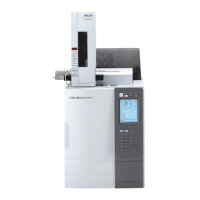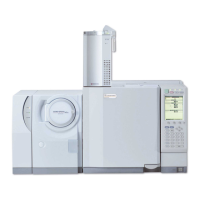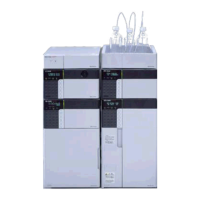12 Injection Port
12.3 Removing and inserting the glass insert
116
GC-2010 Plus
Q Attaching a fluoride rubber O-ring
Use a fluorid rubber O-ring when the temperature of the injection port is 350 °C or less.
Attach the fluoride rubber O-ring as shown below and inset the glass inset in the injection
port.
Fluoride rubber seals the injection port better than graphite, and is normally used. However,
it tends to deteriorate and leak over prolonged periods at high (>350 °C) temperatures.
Check frequently for leaks.
Ensure that the inset is touching the bottom of the injection port. This will place the O-ring
3 mm from the top of the insert.
Q Attaching a graphite O-ring
Use a graphite O-ring when the temperature of the injection port is 350 °C or higher. Attach
the graphite O-ring shown as below and insert the glass insert in the injection port.
Although graphite O-rings are recommended for high temperatures, the sealing ability of
graphite is inferior to that of rubber. Tighten the injection port nut securely. Ensure that the
graphite O-ring is the correct size for the glass inset.
Fig. 12.3.4 Attaching graphite and fluoride rubber O-ring
O-ring
For splitless/WBI analysisFor split analysis
3mm

